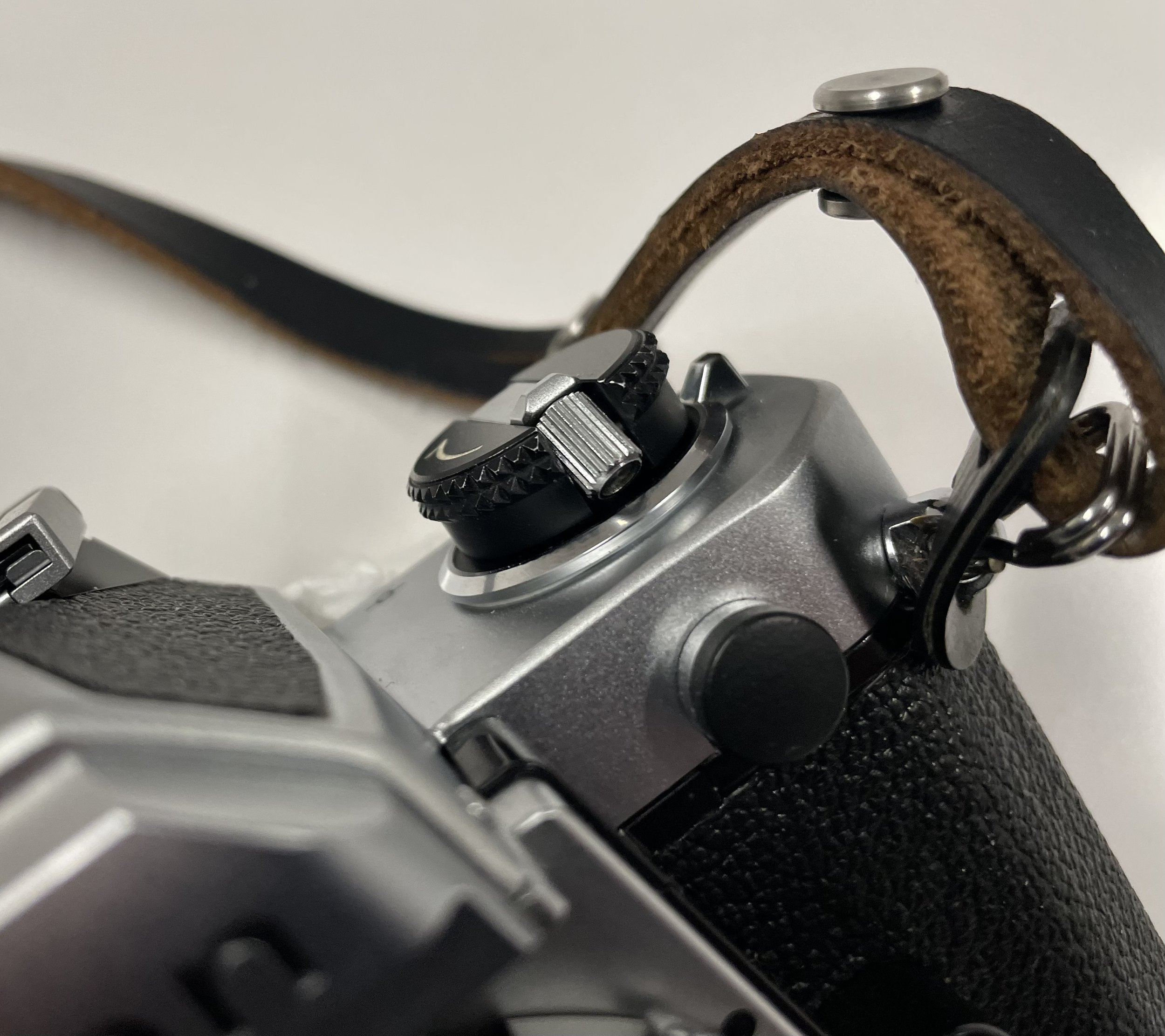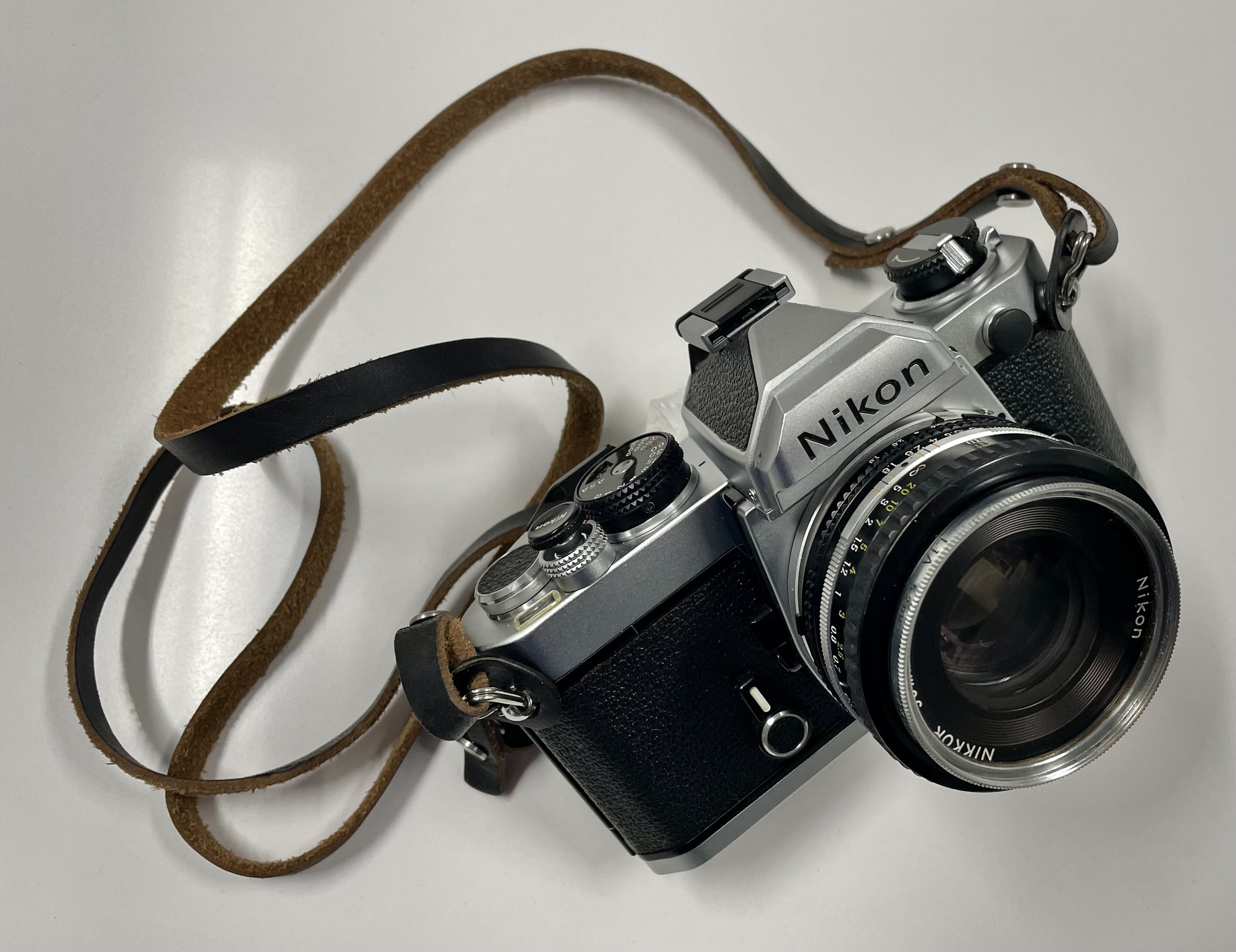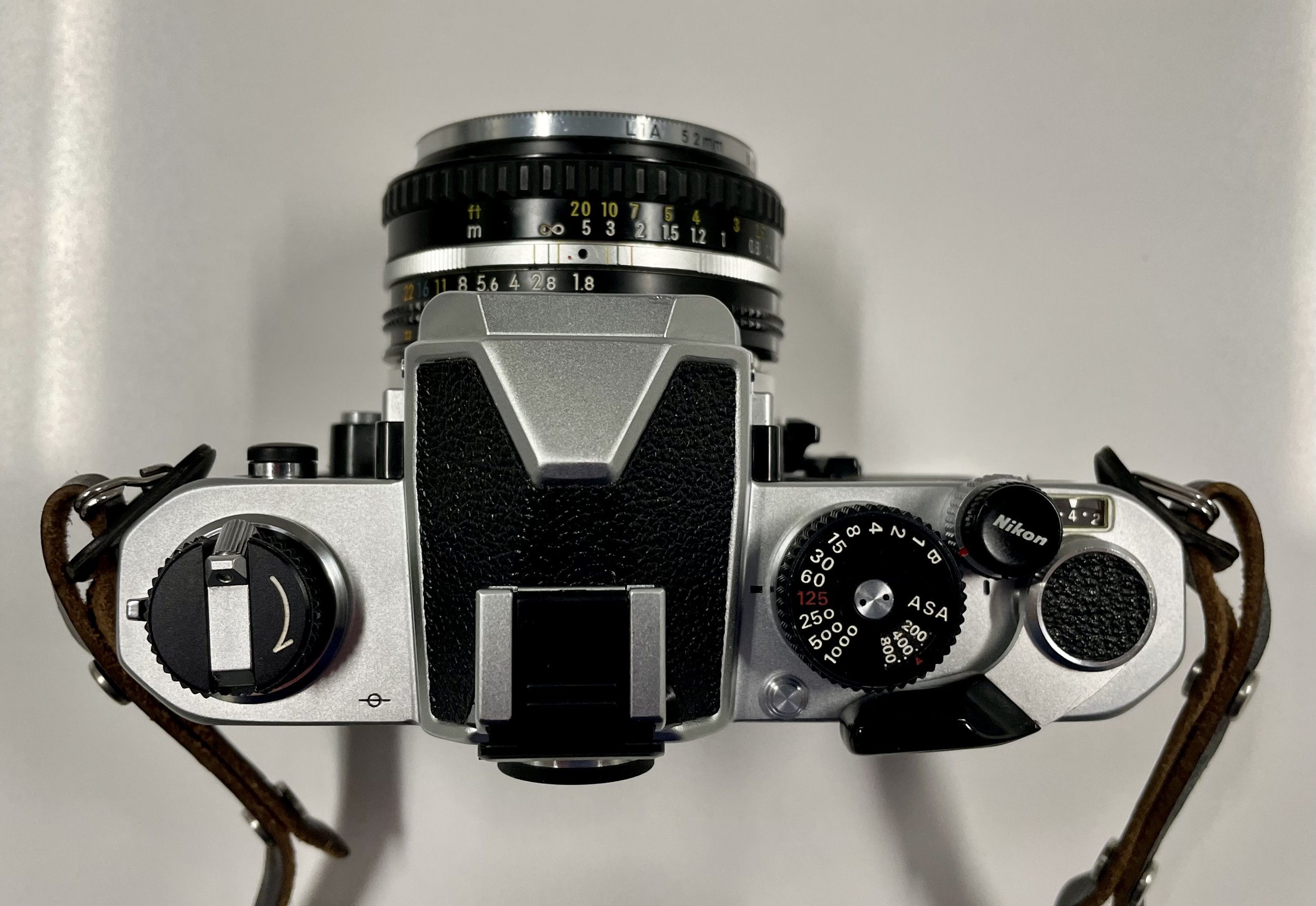The Nikon FM and The Joys of a CLA
For some time now, I have been on the hunt for a very nice, chrome, early edition Nikon FM 35mm SLR. There are lots of FMs for sale on eBay, but I wanted a copy with a serial number that started with a 2 and was a three-knurled-knob version. Why? Honestly, is there really any rational reason for those of us who enjoy analog photography and making pictures with cameras that are more than 40 years old other than…I just wanted one?
During the production run of the FM from 1977 to 1982, Nikon released three versions:
The three-knurled-knob version which has knurling around the collar of the shutter release button, the ASA/shutter speed dial and the rewind crank.
The two-knurled-knob version, which has knurling around the collar of the shutter release and the ASA/shutter speed dial.
And the single-knurled-knob button, which has knurling only around the ASA/shutter speed dial.
The knurling on the shutter release collar, ASA dial and rewind crank knob make it easier to turn these knobs and…well, I just think it looks cool. There were some other refinements to the FM over the production run, but in this hunt, I was simply pursuing the cool factor.
Knurling around the shutter release collar and ASA/shutter speed dial
Knurling around the film rewind crank
The Nikon FM is a fully mechanical camera. It replaced the Nikkormat FT3 and was designed as a smaller more affordable option to Nikon’s professional F-series cameras which at that time was the F2. The FM has a built-in TTL light meter which is represented in the viewfinder as a series of three LEDs, one for overexposure, one that indicates proper exposure and one that indicates under exposure. It’s Nikon’s classic 60/40 center-weighted metering. It’s nearly foolproof. Just center the LEDs and you’re all set. Two 1.5 volt SR44 or LR44 batteries power the meter. The camera operates just fine at shutter speeds up to 1/1000th of a second without batteries.
I searched eBay for a while trying to find the version of this camera I wanted and a copy that looked well-cared for. I’ve bought enough cameras online that I can get a feel from the buyers description, photos and feedback as to whether or not I should bid or buy it now. None of the cameras I saw resonated with me. One day, one of the friends of this blog wrote me and said he was selling a few cameras, including an FM. I asked for pictures and there it was…a nice chrome three-knurled-knobbed FM!
When the camera arrived, I was pleasantly surprised to find it was in cosmetically very good shape. The shutter speeds all sounded good and the meter responded to light and seemed fairly accurate when I compared it to one of my hand-held light meters. This was however a 46-year old mechanical device and since I intended to keep and use the FM, off it went to Jim Holman at International Camera Technicians for a complete service.
I have used quite a few different camera repair techs over the years and in all that time, two stand out as simply superb; Sover Wong, the master of Nikon F2 repairs and Jim Holman. Both Sover and Jim do more than repair cameras, they completely refurbish them and bring them back to factory specifications. And both of these gentleman take detailed photos of the work they are doing on your camera.
Sover only works on the Nikon F2. Jim has repaired several Nikons for me as well as a Canon A-1. He services many other brands of cameras as well as lenses. I have a Pentax K2 that’s next in line to go to Jim.
I really thought my FM was pretty clean. It is amazing how much gunk collects inside after four decades. Here are some shots taken once Jim opened up my FM.
And of course, in any camera of this vintage, light seals and foams have mostly disintegrated. A lot of this stuff is the debris you see when you look through the viewfinder of an old camera.
As you can see, the camera got a complete tear down. As part of the process, my FM got new front leatherette panels installed.
As Jim was working on my camera, he gave me a call to tell me that mechanically, my FM was in really great shape. He said the shutter was very strong, the meter was pretty accurate and after a thorough clean, lube and adjust, this camera would last me for many years. Jim knows how much I love minty cameras and he tossed out an option that was hard to resist. He said if I wanted an absolute mint ++ FM inside and out, he would replace the top and bottom covers with new old stock, essentially giving me back as next to brand new as a 46-year old Nikon can get! I bit.
My FM arrived the following week, securely wrapped, looking and even smelling like a brand new camera. Here she is.
Nikon FM with 50mm f/1.8 AI-s Pancake lens and a 1901 Eggleston leather strap
Top view of the FM. I added a Nikon soft release and Nikon BS-1 hot shot cover to trick it out
Shooting an old mechanical camera is such a joy. Shooting one that has been refurbished and brought back to factory specifications takes things to entirely different level. The shutter speed dial on my FM now moves smoothly with nice, reassuring clicks. The film advance feels sublime. The shutter sounds so good. The viewfinder is crystal clear without any dust or debris. And yeah, I know the new smell is caused somewhat by the Pliobond adhesive that is used on the light seals, but I find it pleasurable.
The Nikon FM is a minimalist, easy to use, easy to love film SLR. The FM often gets overlooked in favor of the FM2 which offers higher maximum shutter speeds and a higher price tag or the FE or FE2 which offer aperture-priority auto exposure.
I have some Kodak T-Max 400 loaded in the FM right now and I’ve been shooting with both the 50/1.8 pancake lens and my 55m f/2.8 Micro-Nikkor. I just adore this camera!
Making pictures with a CLA’d film camera is pure joy! Photos coming soon.









